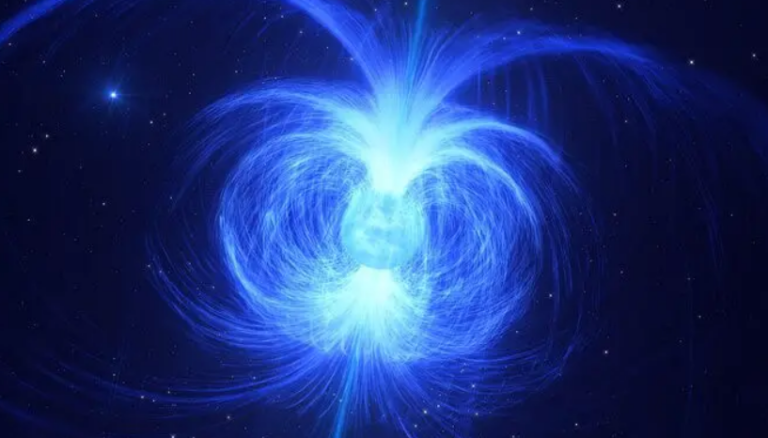Astronomers have made a remarkable discovery of a star possessing a magnetic field that is 10 trillion times more powerful than that of the Sun.
There is a state in the universe that astronomers have experienced in the recent past. They watched a neutron star with a magnetic field thousands of times stronger than the Sun’s Sun spew out a high-speed stream of matter. This discovery has not only shocked astronomers and scientists but has also forced scientists to rethink their own theories they had developed over the formation of these jets in the universe.
Neutron stars also became objects of interest for astronomers because of their dense nucleus that stays after a massive star’s eruption. These exotic celestial bodies are quite numerous, and if for instance our Sun is compressed to the density of a neutron star, it shrinks to about 10 miles across while at present it measures about 850,000 miles across. As is apparent from the crust estimates, the gravitational field near the surface of neutron stars is as strong as the field of black holes, which leads to interesting effects.
In a recent research study, researchers turned to the Karl G Jansky Very Large Array (VLA) radio telescope to investigate an enigmatic neutron star known as Swift J0243. 6+6124 (SW J0243). Source of this object was found using NASA’s Swift space telescope and what was observed was a rather extremely bright outburst which was not expected.
In particular, comparing the X-ray and radio fluxes of such an object before and after the outburst, the authors concluded that it is a neutron star that accretes matter from a rather massive companion located nearby. Then this material condenses into a whirling disk known as an accretion disk. It is believed that due to interaction between the accretion disk and the neutron star’s magnetic field lines produce jets at a speed almost that of light at the poles of the neutron star.

Consequently, jets in a neutron star are not astonishing in and of themselves since we have noted jets emerging from different sorts of neutron stars which are accumulating material from their partners. However, what makes this discovery peculiar is that the star, from which a jet is observed in the given case, is a neutron star possessing a superstrong magnetic field.
In the current theory, neutron stars like SW J0243 with high magnetic fields cannot produce these jets, as if fully understood. Earlier it was postulated that the formation of jets around neutron stars is prevented due to strong magnetic fields about the neutron stars. Thus, they reject the previous concept of the absence of jets in BL Lacs with SW J0243.
However, the authors of the study state that more research is needed in their work as well as in general. They have to collect more observational material on the jets and to ensure that they are real and not the result of some other effects, for instance, very powerful stellar winds or shocks within the accretion disc.
Nathalie Degenaar, a co-author of the study, highlights that this even means not only the need to reassess the current knowledge of jets in such systems but also offers new opportunities for further investigation. If their observations are borne out, or if other jets are detected with more frequencies around strongly magnetized neutron stars, it would be beneficial to this line of study.
Do not forget to share your opinion with us to provide you with the best posts !




0 Comments